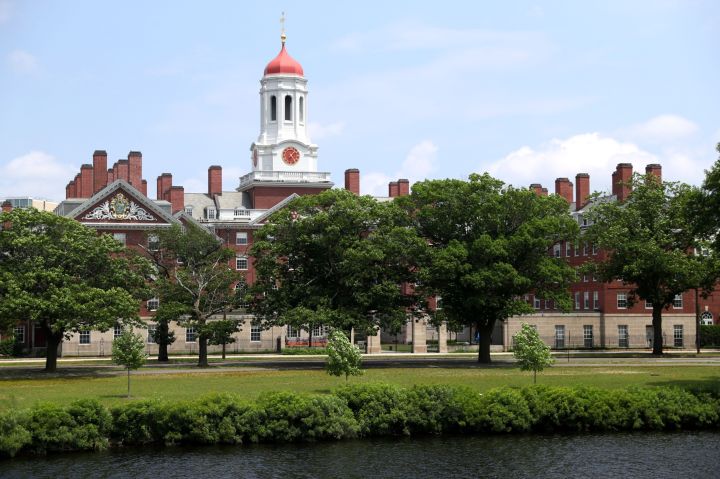Business Maverick
Harvard, elite college backlash seen pressuring billions of debt

Fleeing donors and leadership shakeups at elite US colleges like Harvard University and the University of Pennsylvania are elevating risks for tens of billions of highly-rated debt, according to Bloomberg Intelligence.
Bloomberg Intelligence strategists Joel Levington and Michael Doto are warning bond investors and credit ratings companies to consider rethinking their “laissez-faire” attitude toward university debt after a Congressional antisemitism probe and other scandals have upended campuses, according to a research note published on Wednesday.
The pullback of major donors, a potential loss of the tax-exempt status, declines in applications and management upheaval may impact university finances and endowments, Levington said. Endowments also provide liquidity for these schools, part of what raters look at when grading college debt, he added.
“What has happened over the past six weeks hasn’t helped anybody’s brand image or reputation no matter what lens you look through, it’s nothing but bad,” Levington said in a phone interview. “All of these things are potential risks that just aren’t yet incorporated into the bonds.”
Colleges often tap both the taxable and tax-exempt bond markets to finance campus improvement projects like new dorms or academic buildings. Elite schools, like Harvard, Stanford University and the Massachusetts Institute of Technology boast top credit ratings, unlike most companies, and make up a major part of the AAA corporate bond index, according to data compiled by Bloomberg.
Harvard alumni — from billionaires Len Blavatnik to recent graduates — have said they’re halting gifts until the school does more to address antisemitism in the wake of former president Claudine Gay’s widely derided congressional testimony. That’s threatening to dent the finances of the richest and oldest US university at a time when its investment returns are lagging and Congress is considering ways to cut federal support.
Harvard has a “strong ability to adjust to potential systemic shocks”, Moody’s Investors Service said in a report on 31 October, which was published as outcry against Harvard’s response began to grow.
Read more: Harvard Financial Pain Grows as Blavatnik Joins Donor Revolt
The University of Pennsylvania is also grappling with donor rebellion. Ross Stevens, co-founder of Stone Ridge Asset Management, withdrew a donation valued at about $100-million that he’d given his alma mater, blaming the school’s stance on combating antisemitism.
Spokespeople for Harvard, UPenn, MIT and Stanford didn’t immediately reply to a request for comment.
Still, investors have largely ignored these risks as bond yields remain consistent with the AA-tier credit curve and the Aa2/Aa3 tier index has so far “maintained the traditional views of robust brand durability and continued support for their endowments”, wrote the Bloomberg Intelligence analysts.
When asked about the matter, Moody’s didn’t provide a specific comment but sent a report published this week that shows social risks are rising for borrowers.
Moody’s analysed 90 sectors with about $82-trillion in rated debt globally and found that 21 sectors face heightened overall social credit risk, up from 14 in 2019, according to a report published Tuesday. Nearly $8-trillion in rated debt — including from education and not-for-profits sectors — face heightened social risk, according to Moody’s.
Financial flexibility
To be sure, these institutions have strong financial resources and incredibly high student demand metrics compared to the higher education landscape broadly, providing them with a cushion for short-term challenges. S&P Global Ratings said highly-selective institutions benefit from “significant demand and financial flexibility” which mitigates an expectation for higher economic stresses this year, analysts wrote in a December research note.
Analysts at the ratings company released a report on college scandals in 2019 after wealthy families were found to be paying for preferential admission treatment and said it evaluates incidents on a case-by-case basis. “It is not the actual event but the institution’s ability to respond and adapt in light of it that determines whether there will be any credit implications,” said S&P analyst Jessica Wood at the time.
“In most cases, swift corrective actions and effective outreach have enabled institutions to maintain their ratings,” Wood said in the 2019 report. “On the other hand, some risk management or governance failures have resulted in negative rating actions.”
Previously, large colleges have seen their credit ratings come under pressure if they face large legal bills. Michigan State University paid $500-million to survivors of sexual abuse by a university employee, Larry Nassar. In 2018, before that settlement was announced, MSU was downgraded by Moody’s Investors Service over “heightened financial risk”.
“Credit raters tend to be slow to take actions,” Levington said in an interview. “And investors tend to trade what I would say are very sleepy putaway bonds such as these the way that they’re rated.”















 Become an Insider
Become an Insider
Comments - Please login in order to comment.